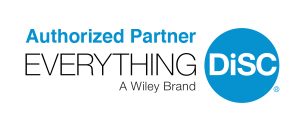From a Line to a Circle: Smoothing Out the DiSC Assessment Report
Using DiSC® to prepare behavior assessment reports has been used for many years; however, the way the information is presented has evolved over the years, too. One example is the change from DiSC® Classic to Everything DiSC® models. The principles of DiSC® as an adaptive testing assessment can vary in measurement and representation for individual test-takers. Administrators continue to refine the model from a linear format to a circle-based model. This change improved clarity and increased usefulness.
Going from a Line to a Circle
In the earlier format, the four principles of Dominant, Influence, Steadiness, and Conscientiousness were measured along four columns. Each column had a vertical numbered scale. A line graph showed where a person’s score fell along the four finite scales. In the new assessment, reports are scored on a circle. It reflects degrees and intensity in the results that a line graph cannot.
Circle representation is more effective because four scales are integrated into a single circle. Where a person’s score falls in the circle demonstrates where they are in a continuum. The continuum is a more accurate representation of human behavior.
Imagine the circle divided into four equal quadrants. Where a test score is marked within that quadrant shows the degree of affinity towards one behavior style or another. The mark’s distance from the center point reflects intensity (with someone who’s mark is closer to the outside of the circle likely reflecting a particular personality style more intensely). This model also shows greater insight because it reflects areas of priority (strengths), as well as areas of stretch (things to work on).
How Does This Change Mean Better Assessments?
Reformatting the DiSC® assessment results from line graphs to circle graphs gives people productive ways to talk about their similarities and differences. Unlike, DiSC® Classic scales, the circle graph reinforces that these elements are on a continuous scale and not concrete, black and white “categories”.
The format of the individual Everything DiSC® report allows participants to read and understand the findings themselves. People can better see where their strengths and challenges lay, both with regard to productivity and efficiency, as well as with interpersonal dynamics.
The newly revised model lends itself to application layers added in response to corporate need: management, sales, leadership, communication, etc. This new format helps folks stick to relevant information that is practical and easily digested; it saves them from deep dives into psychology theory in human behavior and personality, which could be frustrating and discouraging.
Reinventing the Team Building Workshop
Information in “chunks” as displayed in the circle graph can make it easier for participants to remember and understand (one dot in a circle vs four dots on four scales). When all members of a group look at a circle graph with all of their assessment results plotted on the same circle, it can facilitate group conversation. A productive conversation where everyone can understand key terms and values can result in more effective workshops.
Application layers make DiSC® more customizable for specific group goals or dynamics (e.g., sales, management, etc.). Discussing the group visual in conjunction with company goals can support and motivate change. For example, does the group as a whole skew toward one style or another? Does a schematic illuminate why certain conflicts continue to arise? The graph can illuminate key conflicts and prompt a group to discuss workable solutions.
Making DiSC® Work For All
The look of the DiSC® assessment may have changed. However,, the new format doesn’t change the reliability or validity. It simply provides a new way of processing and using the results for positive, tangible change. This new format may be especially useful in working with groups.




